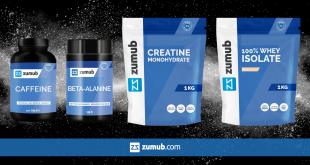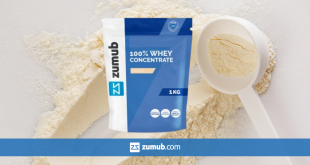For our body to function well, we need to have a diet balanced in macro- and micronutrients.
One of the essential macronutrients for our body is protein.
It’s an indispensable element for the growth, construction and maintenance of tissues (like muscle tissue) and organs of our body.
It’s possible to obtain protein through two sources: animal and vegetable.
Although the one of animal origin is the most common and complete, not everyone likes this option.
Protein of vegetable origin appears as the best option for those who don’t want to consume foods of animal origin.
So if you follow a vegan diet or are simply looking for alternatives to animal protein, this article is for you.
Here you will find out what the best options for vegetable proteins are, both in foods and in supplements.
The importance of protein…
We have to make an intelligent choice for this macronutrient, because it’s one of the most abundant elements in the human body and is indispensable for the growth, construction and maintenance of the tissues (like muscular tissue) and organs of our body.
There are 2 sources to obtain protein:
- Of animal origin (dairy products, meat, fish and eggs).

- Of vegetable origin (legumes, quinoa, rice, vegetables, seeds, nuts …).

According to the EFSA (European Food Safety Agency) the recommended daily protein intake for an adult is 0.83g per kg body weight.
However, for people who exercise regularly the recommended amount of protein may be higher, because the body will need more protein to recover and to repair the muscle tissue destroyed during exercise.
In this case, you should increase the dose with amounts that can vary between 1.5 and 2 grams per kilo of body weight, amounts that depend on the type of exercise and the intensity.
Origin of protein: is it important or not?
First, both animal and vegetable proteins are macromolecules made up of long chains of amino acids linked together.
When we eat proteins, our body is able to disarm these structures and will set the amino acids free.
Once these amino acids are free, they can be absorbed by the intestinal walls, therefore, our body does not care about the origin of proteins.
But it is interested in this factor:
The type and amounts of amino acids
Amino acids can be non-essential or essential:
- Essential: the body can’t produce them, for this reason they must be ingested through our diet.
- Non-essential: they are synthesized by our body.
If a protein doesn’t contain sufficient amounts of essential amino acids, it can’t be qualified as a high-quality protein.
Most proteins of animal origin have a high biological value, which means that they have high proportions of all the essential amino acids in their composition, that’s why they are considered complete proteins.
Unfortunately for proteins of vegetable origin, they are incomplete, which means that they lack one or several essential amino acids or have few amounts.
The following table contains a comparison between foods of animal origin and foods of vegetable origin, to show the difference.
| Foods – Vegetable Origin | Biological Value |
| Beans | 58 |
| Lentils | 45 |
| Soy | 73 |
| Sunflower seeds | 70 |
| Rice | 73 |
| Peas | 64 |
| Foods – Animal Origin | Biological Value |
| Meat | 74 |
| Fish | 76 |
| Egg | 94 |
| Cow milk | 85 |
But … a solution exists
Vegans, or people who don’t want to get protein from animal sources, are more limited, but fortunately to get complete protein in a vegan diet we can get several foods to complement them and get all the essential amino acids, which are: Lysine, Threonine, Tryptophan, Methionine, Phenylalanine, Valine, Leucine, Isoleucine and Histidine.
In order to understand some of the combinations that can be made, we’ll show you a table of foods from the book: Nutrición y Dietoterapia by Krause.

For example: Legumes that are poor in methionine and high in lysine are combined with cereals like rice that are poor in lysine and high in methionine, thereby forming high quality proteins.
In this table is shown the amino acids amounts of each food, for example:
It’s shown that legumes are high in lysine and threonine, but low in methionine and tryptophan, while cereals are high in methionine but low in lysine and threonine, therefore legumes and cereals must be consumed throughout the day with both types of foods.
On the other hand, tryptophan can be perfectly compensated by the consumption of oats, quinoa and soy products.
These foods have another advantage: they are usually healthier than foods of animal origin.
What other ways are there to get vegetable protein?

Supplements are a great option.
Since for people who don’t consume products of animal origin the process to obtain protein is more difficult, supplementation can be a great option, especially if you are an athlete and need to consume higher amounts.
The supplementation option is easy and very rich, as you can see below.
Another advantage: the prices are becoming quite competitive.
The examples we present are good options compared to other more popular sources, such as those of animal origin, and may also be a great option for lactose intolerant individuals.
Soy
It’s one of the richest protein sources of vegetable origin, contains great quantities of proteins with a complete profile of amino acids, It is a fast digested protein and is easily absorbed and used by the body.
In addition, it’s low in fats and bad cholesterol.
Chia
In addition to protein, it contains important amounts of fibers, antioxidants, vitamins and essential fatty acids.
Therefore, it can also help you to detoxify the body and to promote the proper functioning of the intestines.
Peas
A very important source of vegetable protein, fibers, vitamins and minerals, doesn’t contain any fats and has very few calories.
It has a good balance of amino acids, an average speed of digestion and can replace other proteins, with the difference that it contains 0% lactose, 0% gluten and 0% fats.
Hemp
It’s a protein that’s easier to digest than soy, it contains high levels of vegetable proteins because it contains all essential amino acids (in non-high doses of all, which is why it is not considered complete), it’s rich in fatty acids and is a potent antioxidant, helping to strengthen the immune system.
Brown Rice
It may seem strange that this option is here, because it’s usually associated with complex carbohydrates, but rice contains protein.
This supplement is obtained through the isolation of rice proteins. It’s rich in fibers, easy to digest and of moderate absorption.
Tip: You can prepare milkshakes, mixing more than one type of protein or you can buy ready-made mixes of vegetable protein supplements. Check the options here.
In conclusion…
People who don’t follow a diet based on products of animal origin are limited, but the trick is to get all the essential amino acids.
By the way, amino acids go around within the body, circulate through the blood and are stored in the liver, therefore, it’s not necessary to ingest, for example, cereals and legumes in each meal.
You can distribute them throughout the day to taste, in the traditional way with foods, or – easier and scientifically studied – with supplements.
 Zumub.com Official Blog Everything about Fitness, Gym, Nutrition and Supplementation. Read articles written by Zumub.com specialists and expert guests.
Zumub.com Official Blog Everything about Fitness, Gym, Nutrition and Supplementation. Read articles written by Zumub.com specialists and expert guests.




One comment
Pingback: 5 Myths about protein that are now clarified | Zumub.com